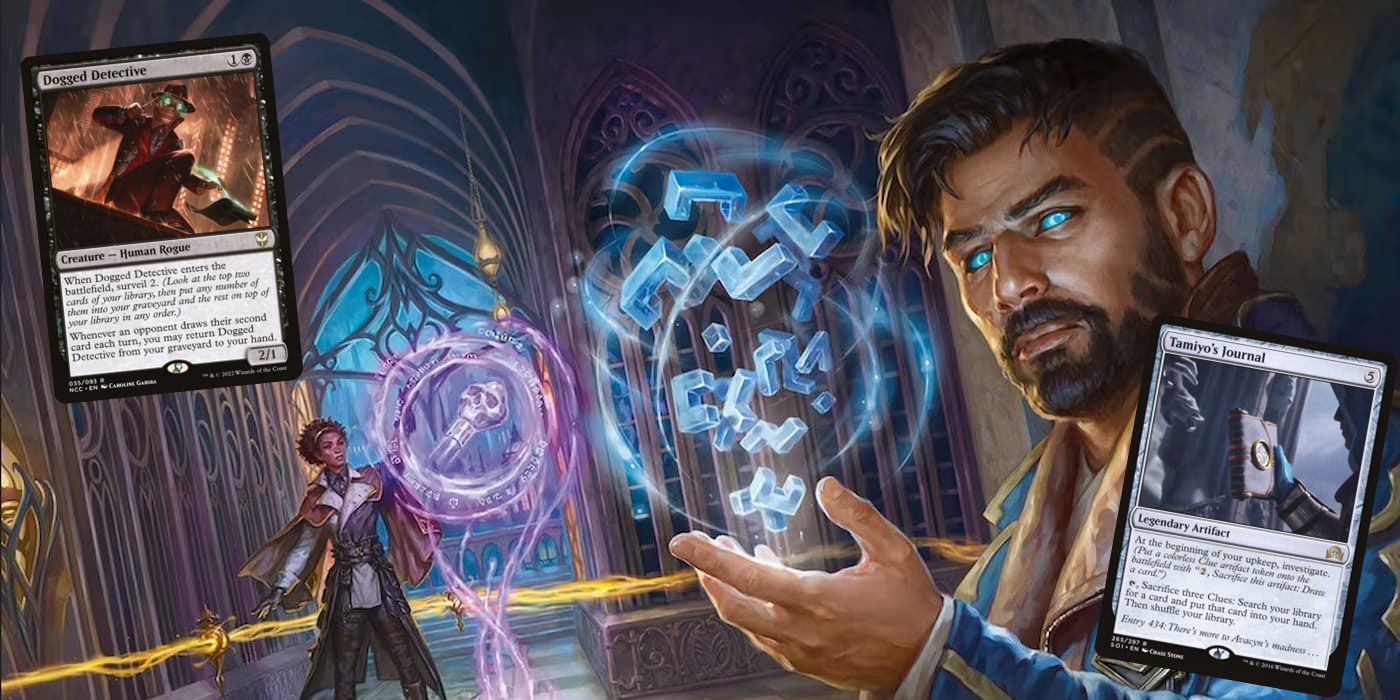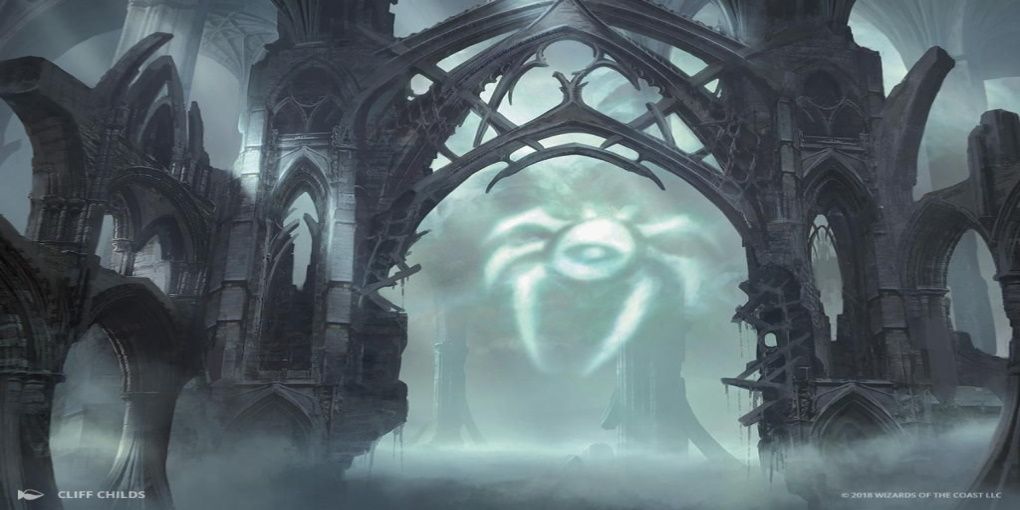Murder mysteries have been in vogue lately, with the surprising success of Rian Johnson-led projects like Poker Face, Knives Out, and Glass Onion. Now Magic: The Gathering is stepping up to the plate in their attempt to capture that genre in card form with the Murders at Karlov Manor set. Not only has Mark Rosewater promised that there will be mysteries in the set, but also that the players will be solving mysteries as part of the set’s gameplay. This will be a tall order.
Murder mysteries are hard to nail down, with the problem being that they can often end up unengaging for audiences for various reasons. Mysteries like the ones being set up in Karlov Manor will need to avoid a lot of murder mystery pitfalls in order to engage players and attract people who love whodunits but who may not be aware of Magic.
What Makes A Good Murder Mystery?
Murder mysteries are written with the idea that the viewers are attempting to solve the mystery as it goes on. When someone reads or watches a whodunit, the idea is that they are attempting to figure out what’s going on alongside the detectives in the story. This is important not only as a way for people to feel invested in the story of the mystery as it moves along, but it’s also key for making sure people are fully invested in the ending of the mystery, too. In the interests of both these goals, murder mysteries have to play to a certain set of rules known as “fair play,” otherwise they risk losing the audience.
In 1929, Ronald Knox, an author of murder mysteries at the time, codified ten rules for murder mysteries. In general, his rules were focused on ensuring that readers had all the clues that weren’t introduced earlier in the story/ Twins were not allowed to feature in the resolution, for example, and he prohibited having more than one secret passage in a house. His rules are somewhat outdated and mostly focused on the particularities of whodunits of the era, but the general principle is that the mystery writer needs to play fair with their audience more than they need to trick them with unexpected twists.
Distinctive style and atmosphere are also an important part of murder mysteries. Whether a prospective author is considering writing something in a cyberpunk future or in the Victorian era, the characters and mysteries in those genres are very different. While a turn-of-the-century Agatha Christe-style whodunit is generally focused on the personalities, means, and motive of a killing, the Noir-era is more focused on the dark conspiracy, moral ambiguity, and the web of crime around the murder. For Ravnica and Karlov Manor, the aim appears to be to take from Victorian or 1920s murder mysteries, as befits a crossover with Clue, but Ravnica is also a setting heavy with factional fighting with the clans and plenty of plots and conspiracies. It will be interesting to see whether they pull more from Murder on the Orient Express or The Third Man.
Common Murder Mystery Pitfalls
Beyond ignoring fair play and lacking a distinctive style, there are some pitfalls that murder mysteries fall into that Wizards should be aware of for Murders at Karlov Manor. Whodunnits, even when fair play is a consideration, still have to balance how much information they give away. Mysteries with obvious conclusions can be very unengaging for audiences, so while it is necessary to give the audiences enough to feel invested, it’s important to still keep them guessing.
Perhaps the most overlooked and important element of any mystery is its theme. A common pitfall is to ignore theme. Theme is a critical part of getting audiences to care about the characters, suspects or detectives, and the mystery at large. Some of the most legendary and enduring works of mystery have had strong thematic identities. Murder on the Orient Express is about wrestling with the nature of punishment and justice. What happens when the law fails the victims of a crime? It’s such a resonant theme given that Poriot, the detective in the novel, is such a champion of doing things the “right way,” so confronting him with justice that was obtained with murder is a very powerful part of the story. Rian Johnson’s work with Knives Out and Glass Onion pokes at key themes of injustice and the general question of “Will people do the right thing against their own self-interests?” These themes enrich and focus mysteries, making it possible to care beyond the basic question of who did the murder.
All these considerations will be complicated by the medium through which they will be by telling these mysteries. A big question is what mysteries and puzzles in the context of a game of Magic would look like. Will these puzzles be a part of the emergent gameplay of the game itself? They could implement new mechanics or a new card type in order to create the puzzles in games. On the other hand, the mysteries could also be about solving puzzles across multiple cards, which all give some sort of clue as to what’s going on. In any case, it will be very hard to integrate all the elements of fair play, style, theme, and information balance that a mystery needs while also balancing a whole set. Murders at Karlov Manor may need some especially meticulous design depending on how ambitious Wizards are feeling. A common pitfall in many interactive mysteries is not to consider how playing a game actually changes the story and mystery. This will also be affected by the reality that Magic is not a single-player experience.
Integrating a Murder Mystery Into Magic
As mentioned before, there are some difficulties with transposing a murder mystery into Magic: The Gathering‘s mechanics. The truth is that the “how” of this genre blend is still very much unknown. Unlike other top-down set themes where it would be easier to guess what kind of creature types, mechanics, or card types would be prominent in the set, murder mystery is something that Magic hasn’t really done before as a focus for an entire set. It’s reasonable to guess some keywords like Surveil may appear, as well as clue tokens, but beyond that, the new and exciting things promised by Mark Rosewater are hard to guess at.
Mysteries require a certain degree of progression as facts are revealed over time, so it’s possible players may see something like the dungeons from the Forgotten Realms sets or sagas in this set, but neither of them has the sort of flavor required for a murder mystery set. It’s more than likely some sort of new card type or mechanic is introduced, but as to what this new mechanic might look like, it’s mostly unknown at this point.




